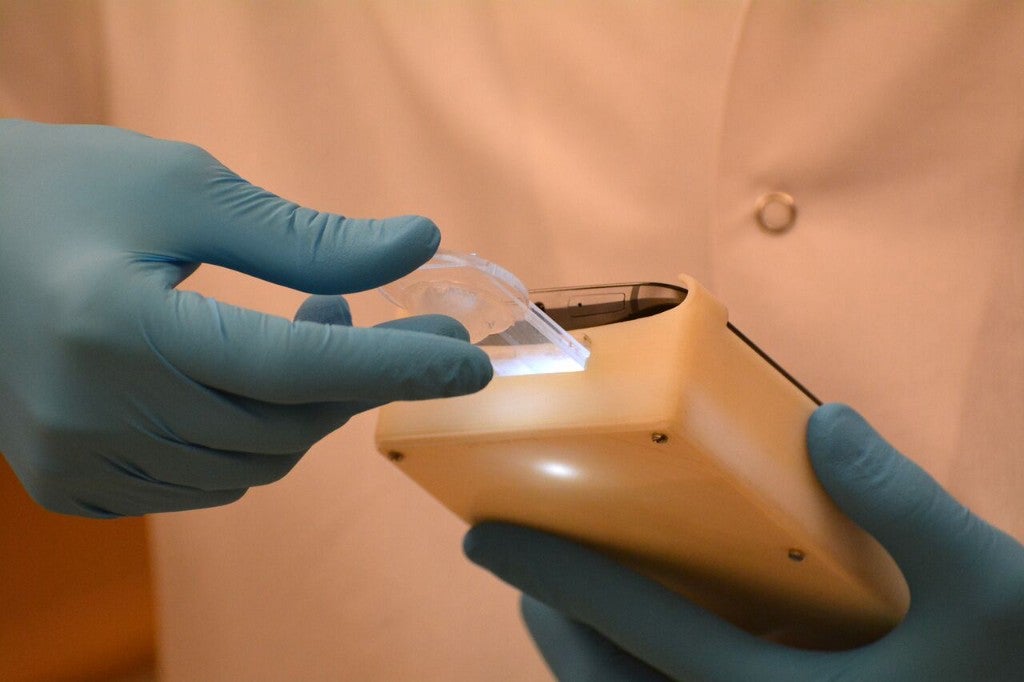What do your sperm look like?
Something resembling a tadpole probably comes to mind, which isn’t far from the truth:
Normal sperm have oval-shaped heads, an intact mid-section and an uncoiled single tail. But sperm aren’t cookie-cutter; their shape and swimming ability can vary enormously from person to person, and the hundreds of millions of sperm in the average ejaculate can include ones with giant heads, tiny heads, two heads and even no heads.
So again — what do yours look like?
Harvard professor Hadi Shafiee would like to help you find out via an app — but of course — that transforms your smartphone into a microscope that allows you to watch your swimmers in action.
In a paper published in Science Translational Medicine last month, Shafiee and his team of researchers proved that within seconds, their fully automated analyzer could assess the quality of a man’s sperm based on standard concentration and motility criteria — i.e., the number of sperm and their ability to move — with approximately 98 percent accuracy.
Shafiee recently walked me through the process of DIY semen analysis, who stands to benefit the most from the device and how sperm viewing could soon be a mainstay at bachelor parties. Here’s the most interesting stuff I took away from the conversation…

You don’t need to be a chemist to perform this test. If you can operate Waze and a turkey baster, you’ll have no problem with Shafiee’s sperm app. First, attach a box similar to a smartphone case to your cell phone. Then, cum in a cup. (The average load will suffice since you’re sampling a tiny amount.) Next, use a mini baster that’s provided with the hardware to suck some of your semen into a sealed, disposable microchip. Insert the cum-filled chip into a small opening at the base of the box. Optical elements in the device work with the phone’s camera to create a small microscope. Run the app to record and analyze a short video of the sample, which counts the number of sperm and tracks their movement to determine how fast they swim. The results can then be transferred to your physician over the cloud for further examination.
You can see your ability to procreate firsthand, in real time. Issues on the man’s side are likely to contribute to a couple’s infertility, yet women have traditionally borne most of the weight when it comes to costly, time-consuming fertility care. Shafiee explains that men are rarely tested because they have awkward experiences providing samples in hospital rooms under pressure. “The clock is ticking,” recalls one man on the fertility support site themodernbelly.com. “Taking a closer look at the surroundings, you see blotches of dried up-goo, and you make a mental note to make sure you stay away from them.”
Shafiee adds that there can be cultural and religious barriers to overcome as well. In some African countries, for example, men aren’t permitted to masturbate in a hospital to provide a sample. “We wanted to close a clinical gap and come up with a solution that’s as simple and affordable as pregnancy tests for women.”
It’ll cost less than $50. Shafiee says the kit’s components — the box, the disposable micro chips, the turkey baster — will cost $5. With requisite margins, this will enable a market price of under $50, a figure that’s likely to drop when mass production begins. “The low price will allow the product to be sold in emerging markets and remote places in the world.”
It’ll make vasectomies a lot easier. After a vasectomy, men are typically required to return to the clinic regularly over six months to evaluate whether or not the procedure was successful. (Urologists can be sued if it weren’t, Shafiee explains.) A disposable, home-based, low-cost device to confirm that the ejaculate is “all juice, no seed” is valuable to both the patient and the doctor—if for no other reason than it saves a considerable amount of time.
It has multiple applications. “I’ve received many requests from animal breeders to see if the device is available for use yet because examining sperm quality can be very valuable for them,” Shafiee says. His team is currently testing a similar platform and app to identify pathogens in saliva, blood, and plasma with “very promising results.”
It could combat the side effects from testosterone treatment. Around 200,000 prescriptions for testosterone and steroids are written every month in America as more and more men view them as a possible cure for fatigue and a flagging sex drive. These treatments, however, can have significant side effects on fertility, Shafiee explains: “This device could be used to determine which dosage works best to mitigate those.”
Once it’s mass-produced, it could be a party game. “I think this is going to be a cool product,” Shafiee says. “People at parties will be interested to check it out, because looking at your semen sample under a microscope using a smartphone is pretty cool.”

